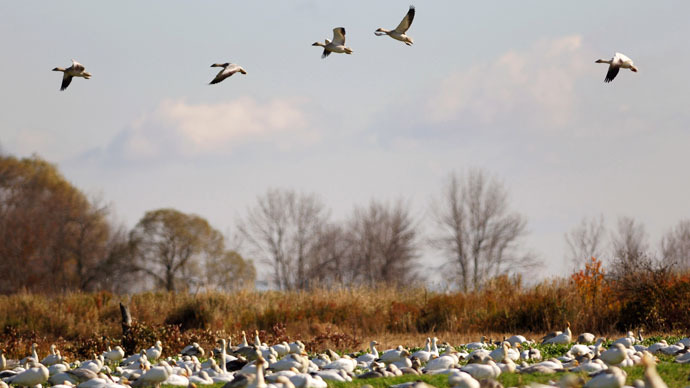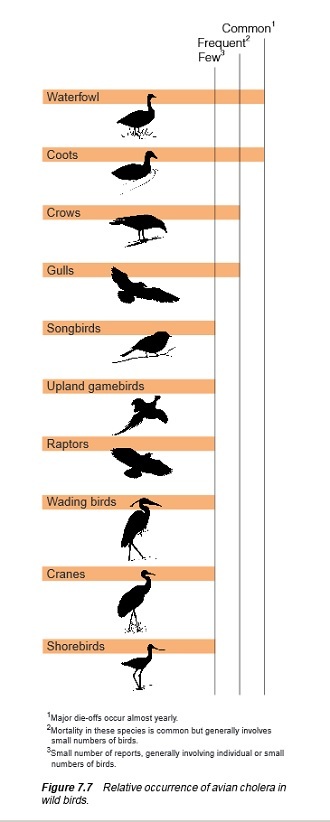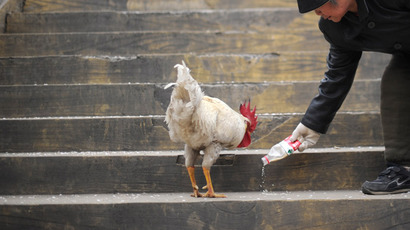2,000 dead snow geese ‘basically… just fell out of the sky’ in Idaho

Volunteers and Idaho Department of Fish and Game (IDFG) staff members spent the weekend collecting the carcasses of about 2,000 migrating snow geese that died mid-flight. Its officials believe the birds were killed by avian cholera.
“Basically, they just fell out of the sky,” IDFG spokesman Gregg Losinski told Reuters.
Snow geese breed on the tundras of Canada and Alaska during the summer, and spend the winters along both American coasts, as well as in marshes, grasslands and wet areas near ponds. These birds were migrating back to their nesting grounds in Northern Alaska from the southwestern US and Mexico, and died while stopping at Idaho’s Mud Lake and Market Lake Wildlife Management Areas, IDFG said in a statement.

Avian cholera is a contagious bacterial disease marked by large die-offs.
“The sudden appearance of large numbers of dead birds in good body condition with few if any sick birds is observed,” the US Geological Survey said. “Death may be so rapid that birds literally fall out of the sky or die while eating with no previous signs of disease. Sick birds appear lethargic, and when captured may die within minutes.”
A small number of snow geese carcasses were reported at Camas National Wildlife Refuge near Dubois, Idaho. Higher numbers of dead birds were found at Mud Lake, near Terreton, as well as lesser numbers at Market Lake, near Roberts, according to IDFG.
"Outbreaks of avian cholera have occurred sporadically in the region over the past few decades," IDFG Upper Snake Regional Supervisor Steve Schmidt said in the statement.
"The important thing is to quickly collect as many of the carcasses as possible, to prevent other birds from feeding on the infected birds," Schmidt added.
About 20 bald eagles were seen near areas where snow geese carcasses littered the ground but a lengthy incubation period makes it unclear if the eagles were infected and would carry the ailment elsewhere, said Losinski.
Pasteurella multocida, the bacteria that causes avian cholera, can be transmitted by bird-to-bird contact, contact with secretions from or feces of infected birds, or ingestion of food or water containing the bacteria. Aerosol transmission may also occur. The bacteria may survive up to four months in soil and water.
A team of University of Idaho researchers studied geese more than a decade ago. They found that less than 5 percent of healthy wild birds were carriers of the avian cholera bacteria.
“Our results confirm the hypothesis that wild waterfowl are carriers of avian cholera and add support for the hypothesis that wild birds are a reservoir for this disease,” Michael D. Samuel, the head of the research team, said, according to the Daily Times Gazette.
Avian cholera is the most important infectious disease affecting wild waterfowl in North America, according to the USGS. The most commonly affected species of birds are ducks and geese, coots, gulls and crows.
A similar die-off occurred with eared grebes and bald eagles in Utah in late 2013, with the grebes falling from the sky in November and the eagles, which prey on smaller birds, dying in December, NBC News reported. More than 10,000 migrating birds died of avian cholera in Oregon in April 2012, with snow geese and northern pintails being the hardest hit species.
IDFG is asking anyone who observes dead birds to report them to the Upper Snake Regional Office. The deceased animals should not be handled because of the potential to unintentionally distribute the disease to other wildlife, the agency said.













